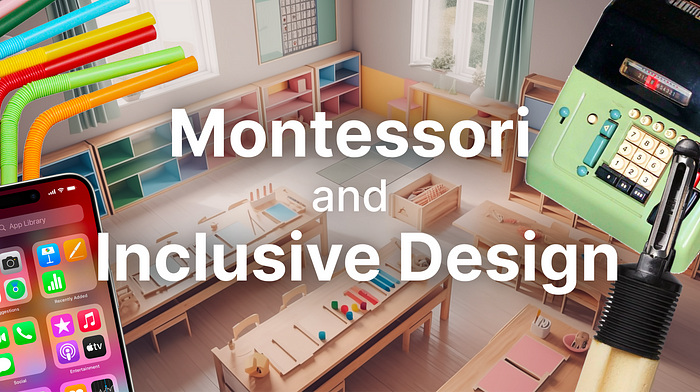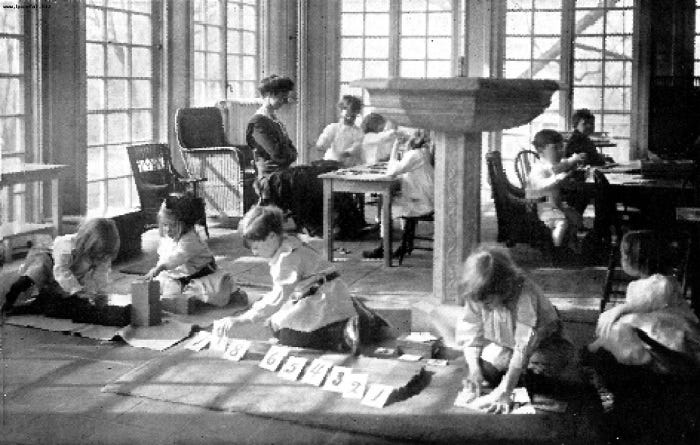Member-only story
Inclusive design: tips from Montessori’s human tendencies

On her first day at a Montessori school, a girl was drawn into a room with colorful puzzles, smaller furniture than ones she was familiar with, and objects made out of wood that made her want to touch. As she explored, she started to see that each item had its own place, inspiring her to tidy up by putting items in the right places after herself.
Montessori classrooms, often linked with inclusive design, prioritize guiding children based on their interests and developmental stages, with an emphasis on what truly draws children in — their “human tendencies.” In this entry, I wanted to explore industrial, digital, or architectural designs that I can correlate with those instincts that humans or children have.
What is Montessori Education? — Taking Advantage of “Human Tendencies”
Montessori education, a popular format, especially for younger ages, emphasizes child-centered learning. It was introduced by the Italian physician Maria Montessori in the 1900s. During her medical education at the University of Rome, Maria spent time in pediatrics and psychiatry, shaping her methodology of observing and responding. Through her observations of children, she discovered that children possess an inner drive to learn autonomously when provided with the proper environment. Educators, including teachers and parents, should create environments well-suited for children, and her later effort was to design and run education centers to set them up.
The Montessori Method (1908)
After directing special education programs, in 1907, Maria was invited to oversee an early educational center for working parents, “Casa dei Bambini” (translated to “Children’s House”), which opened in Rome’s poor neighborhood. Although the children were unruly at first, they soon showed interest in carefully curated learning materials.

Her methodologies and theories were documented in “Il metodo della pedagogia scientifica” (translated to “The Montessori method”) with Alice Franchetti, an American philanthropist, and pedagogue. In this…







